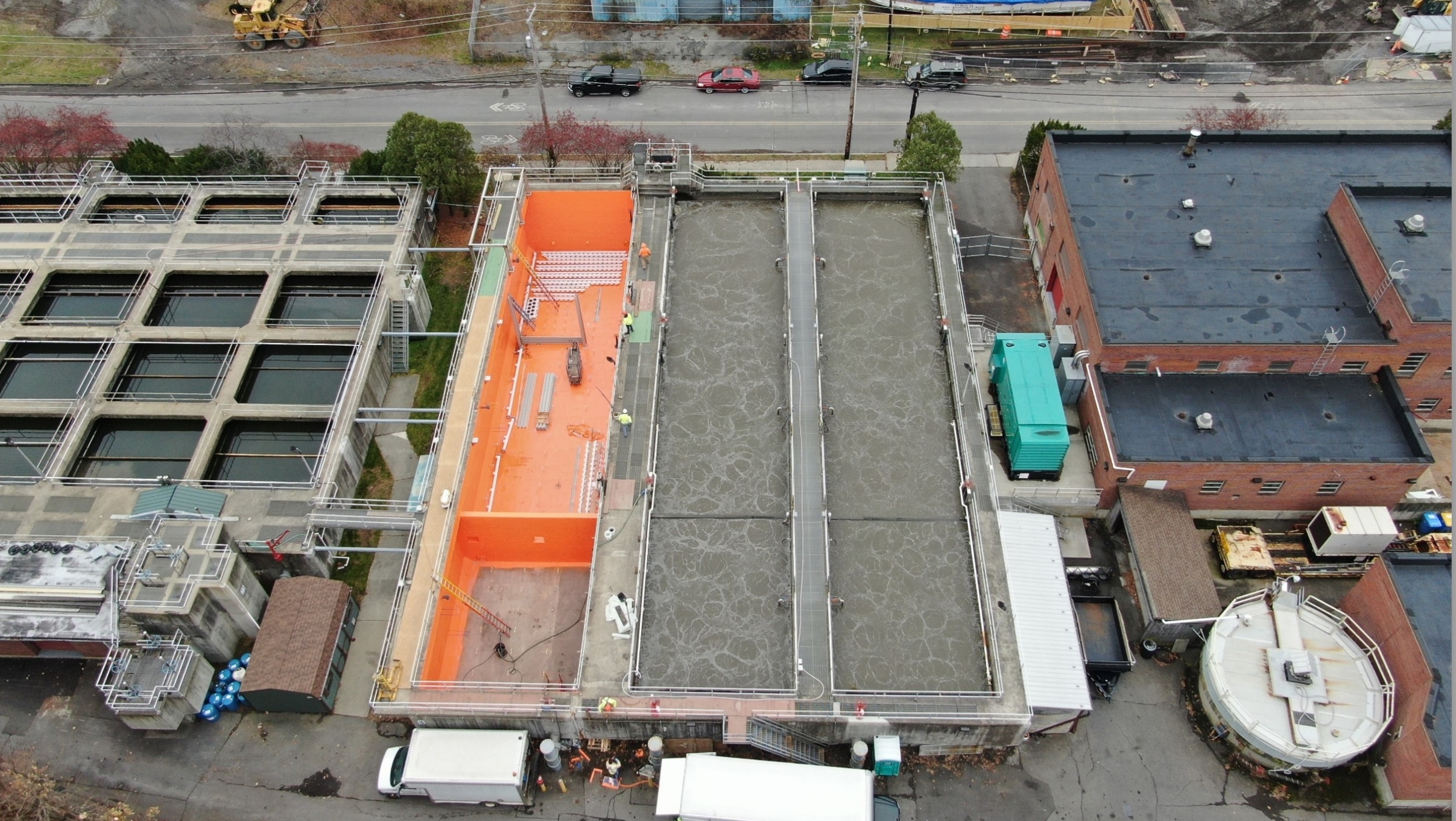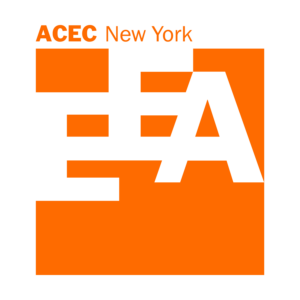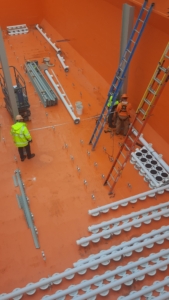Kingston WWTP Improvements Win ACEC-NY Award

An aerial view of the aeration system being installed at the Kingston WWTP.
The New York chapter of the American Council of Engineering Companies (ACEC-NY) has awarded our firm a 2025 Platinum Award in Engineering Excellence for the design of upgrades to the City of Kingston’s Wastewater Treatment Plant (WWTP).
 The improvements to the Kingston WWTP included a customized aeration system to decrease levels of ammonia in treated wastewater, as well as improvements to the outfall system which improved the structure’s resiliency and further improved water quality in the Rondout Creek.
The improvements to the Kingston WWTP included a customized aeration system to decrease levels of ammonia in treated wastewater, as well as improvements to the outfall system which improved the structure’s resiliency and further improved water quality in the Rondout Creek.
In 2016, the City received a renewed State Pollutant Discharge Elimination System (SPDES) permit which included effluent ammonia limits requiring upgrades to the existing Wastewater Treatment Plant (WWTP) to treat wastewater to a higher level of quality. The consultant team, including Tighe & Bond, watershed consultants Schnabel Engineering, and electrical designers JK Muir, worked with the City to provide an acceptable plan to the New York State Department of Environmental Conservation – Region 3 (NYSDEC), which outlined the proposed steps forward to achieve SPDES permit compliance. Through detailed analysis and effective communication, the consultant team negotiated increased permit limits with NYSDEC through improvements to the outfall and upgrades to the existing aeration system.

The aeration system under construction.
The aeration upgrades included implementing a nitrification process that was specialized for the site needs of the Kingston WWTP. The Kingston WWTP utilizes a modified Ludzack-Ettinger process using a “swing zone” which can operate as either anoxic or aerobic, depending on season. The use of a swing zone reduces the plant’s energy costs, while also allowing the plant to operate during wet weather events while in step-feed mode, which is critical at a plant receiving combined sewage.
The outfall modifications included extending and lowering the outfall piping into the Rondout to achieve a depth below 20 feet at mean low water (MLW), a new protection system for the outfall, along with a new steel bulkhead and a marine mattress system to protect the outfall piping below the water line.
The success of the project relied on communication between the City, consultant team, state authorities, and Kingston residents. The City and consultant team were active in engaging residents and messaging the cost savings and water quality benefits based on the project approach. In addition to its important impact on receiving water quality, the outfall project had significant public impact. It removed the exposed plant outfall in the bustling riverfront area, and its design facilitates construction of a future segment of the Empire State Trail, which will pass over the outfall.

The outfall modifications under construction.
The innovative approach to design led to immediate and long-term cost savings throughout the project, saving an estimated $8 million in capital and operating costs over the next 25 years. Now fully constructed, the improvements have enabled the Kingston WWTP to meet its permit limits for summer and winter performance.
Tags: Awards, kingston, New York, Wastewater, wastewater engineering


